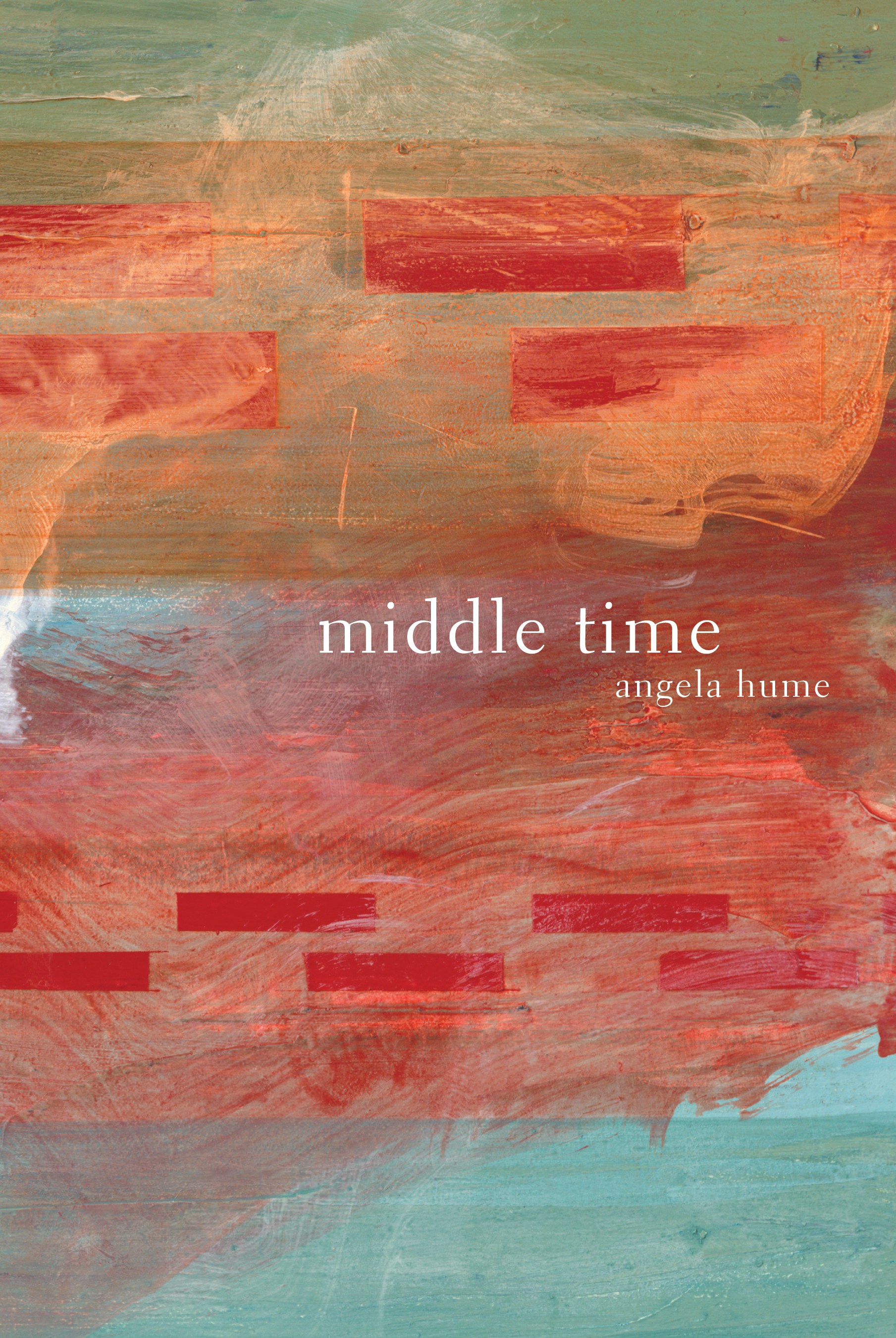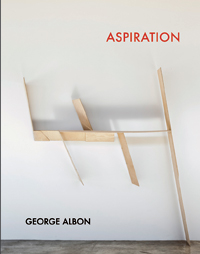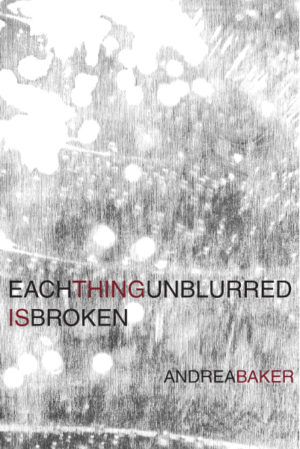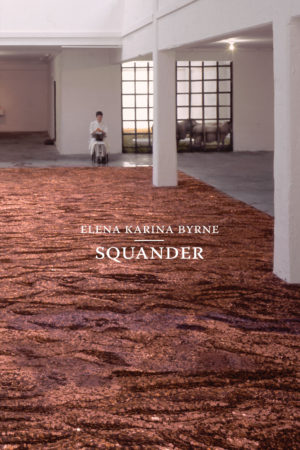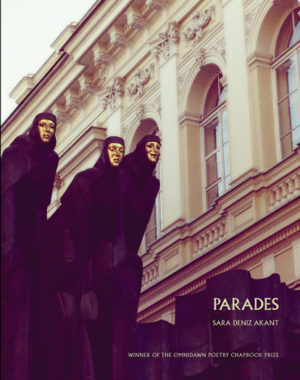Description
A meditation on the body amidst a crisis of environment, Middle Time imagines the contours and limits (or non-limits) of bodies at a time when our attachments and our ecologies are increasingly administered, exploited, and degraded. How in particular, asks Middle Time, might one write the feminine body in ways that avoid essentializing women’s experiences of toxicity and risk, while also acknowledging a very real history of patriarchal subjection of women’s bodies to the same? At times choral lament, at times lyric trace of individual witness, the book’s voices point toward the question of what it means to be in “the middle” (the title of one series), pushing back against the often totalizing rhetoric of “end times.” While borrowing from and undermining the languages of poetry, philosophy, science, and medicine, Middle Time reaches toward a lyric of resurgent desire for a dire yet resilient present.
Norma Cole has reminded us that form arrives at the edge of language, but where I find the crackling utterances in Angela Hume’s Middle Time emerge is at the inverse of Cole’s provocation. In Hume, it is as if some thing has been built or birthed and now, here’s language necessarily transforming not singular objects but our cellar makeups, our bodies [female]. To avoid anxiety, Hume destroys stasis. What are the limits of the [suffering] being?, Middle Time asks, at the very moment where the sweet tongue enters the mouth. To open this book is to open not only your metaphorical heart, but to hear it beating sporadically, as if under pressure, which is to say, you will glimpse that rare understanding, however fleeting, that reassures us in the darkest times. Angela Hume’s debut collection is obviously a bright one. It is a book we need now.
Dawn Lundy Martin, author of Life in a Box Is a Pretty Life
Mid-stream, mid-era, mid-construction of the notion of an Anthropocene extending into a multitude of future absences, Hume is writing poetry that is both symptom and diagnosis. Querying vocabularies of mitigation, of damage, of ‘rage’s junk effects,’ these intelligent, visually and sonically acute fragments set forth an almost impossible lyric of a ‘possible earth/capsizing toward you’ or, rather, us.
Evelyn Reilly, author of Styrofoam and Apocalypso
What happens when in time of extreme crisis the action (poesis) of a discerning mind creates, not arguments or proposals, but poetry – a fundamentally playful textual environment of multi-directional implications? With exquisitely evocative surface tension among precisely placed (terrifying and beautiful) fragments, the personal and planetary ecosystem of Angela Hume’s text is richly complex: resonant with love and emergency; charged by awkward facts and intense desires. In midst of what she calls “middle time” – between the violence of historical carelessness and the most dire of probable consequences – Hume’s active generosity of material and imaginative space makes it surprisingly possible to conjure myriad forms of life thriving in improbably unconsummated ruin.
Joan Retallack, author of Procedural Elegies / Western Civ Cont’d /
“what is the name of the/ book on skin”: These lines encapsulate the thesis of Middle Time, Angela Hume’s first book of poetry. In the wake of a “closed system” in which “nothing” is “at risk of falling out,” the issue, in the indicative, is indeed “What does/ a poetics.” Hume’s minimalist, laconic eco-poetics respond to her own challenge. She treats the page as the space of Derrida’s “white mythology”; words flounder (“nowhere/ to go//light gone out of the sky”), break down into their constituent components (“e/ruption// inter/pretation”), much like the marine and terrestrial life forms reduced to organ dysfunction (“(blood coming from her/ nose, her vagina”) under the “very slow/violence” of human culture. Middle Time is a meditation on “the temporality/ of the middle” as the “temporality of waste.” Consequently, “when the water/ runs out the middle/ runs out….” In such a world, populated only by gods and microorganisms, “the crisis is the end of the commons is/…and we do not heal.” Middle Time is a brave, unflinching delineation of the coming extinctions and, most important, an ethical refusal of human exceptionalism.
Tyrone Williams, author of Howell
About the Author
Reviews
Excerpt
Angela Hume is the author of the poetry chapbooks Melos (Projective Industries, 2015), The Middle (Omnidawn, 2013) and Second Story of Your Body (Portable Press at Yo-Yo Labs, 2011). Individual poems have appeared in Dusie Magazine, Armed Cell, Little Red Leaves, RealPoetik, eccolinguistics, Zoland Poetry, Spinning Jenny, The Portland Review, and elsewhere.
A brief interview with Angela Hume
(conducted by Gillian Hamel)
I was so happy to see this manuscript come to Omnidawn. I was a big proponent of your chapbook The Middle when it won our chapbook prize, and your first full-length book seemed like an ideal choice for my first project as managing editor here at Omnidawn. Indeed, Middle Time seems like a perfect entry point into so many important conversations in poetry and broader culture: the precarity and resistance of marginalized bodies; the pervasive rhetoric of extinction and apocalypse; the interrogation and politicization of the lyric. You also touch on some of these themes in your previous chapbooks and in your academic work, so it’s clear that they have occupied both your poetic and scholarly mind for many years. Can you talk about how these concerns converged into the work that is Middle Time?
Thank you, Gillian. Your question is about poetry and broader culture, but I want to start with a comment about the work’s relationship to me personally. I started working in earnest on the book in 2010. Since then, I have seen both my personal and social worlds reach different kinds of breaking points. I’ve lost people I loved. I left someone I loved. A lot of the book is about grief. It’s also about starting over. By the time I finished Middle Time, I’d fallen in love again. So also, I think, the book is about letting go of the person you used to be in order to create space for the person you are becoming. Middle Time explores the fluidity of sexuality, queer desire, and love, how they are never simply one thing or another.
Since I began writing Middle Time, I have also seen the social and material worlds around me change dramatically. California, where I live, began to experience one of its most severe droughts. Recent years have been among the hottest on record. We’ve seen some of the worst human-made environmental disasters—the Pacific Garbage Patch, the BP Blowout, Fukushima, and many others—primarily affecting, as is most always the case, the most precarious bodies. We now know that human activities have led to the extinction of half of the world’s wildlife species. And when the IPCC released its fifth assessment report, it shifted its focus from how we might prevent climate change to how we might begin to mitigate and adapt to the current reality of it. This is the world in which we live. Middle Time asks: how to be a body inside of this world body? How to live so vulnerably?
Apocalypticism, frequent talk of “end times,” can be paralyzing. But it’s not the end! People talk about the end of oil, for example, and the chaos that will surely ensue. But the scarier reality is that as we continue to develop our extraction technologies, we become more capable of capitalizing on previously unusable or unreachable reserves like tar sands and shale oil. In fact, we probably won’t be at risk of “running out of oil” for many, many more years. Living in “middle time” means asking: even though we have fossil-fuel reserves to sustain our energy system and way of life for some time, what actions must we take now to ensure that we won’t?
Middle Time explores a poetics of the in-between and an aesthetics of transition (to borrow Michael Ziser’s phrase). It is a book that asks what happens after you realize that, as one poet famously wrote, you must change your life. And it is a book that asks what it feels like to inhabit crises (crisis: a turning point or decisive stage in the progress of anything) that will lead to new personal, historical, and material realities.
The book also tracks my own fraught, evolving relationship with what some people call “the lyric.” People have a lot of ideas about what a lyric poem is or should be—poetry that expresses personal feelings, musical poetry… Middle Time both adapts and undermines these ideas. Poets and critics have argued about the relationship between lyric poetry and society for a long time. To a point, I’m with Theodor Adorno, who claimed that lyric’s very substance is social. Regardless of its intentions, the lyric becomes a historical document that can reveal hidden values and ideologies. As Audre Lorde writes, “so where is true history written / except in the poems?”
That said, I think that lyric (whatever “lyric” is) must be understood, and must understand itself, not only as social register but active agent. Lyric must stand up to history. One way that poetry can do this is by interrogating poetic language and tradition. As Rachel Blau DuPlessis argues, women poets in particular “must make a critical poetry, an analytic lyric,” one that “ruptures the history of poetry.” If Lyric is patriarchy, then feminist lyric must work to demolish this capital-L tradition.
As you say in your description of the book, Middle Time “borrow[s] from and undermin[es] the languages of poetry, philosophy, science, and medicine.” The taut fragmentation of your line creates an effect that is beyond collage, more powerful and complex; in Tyrone Williams’ endorsement, he writes and quotes: “words flounder (‘nowhere / to go // light gone out of the sky’), break down into their constituent components (‘e / ruption // inter / pretation’), much like the marine and terrestrial life forms reduced to organ dysfunction (‘(blood coming from her / nose, her vagina’) under the ‘very slow / violence’ of human culture.” The precision and focus of each line invites care and scrutiny to the sentiment of lyric, while also bringing forth the inherent music in more theoretical language. Could you speak to your process of working in this form, your sense of phrase and line?
In my mind, the language of Middle Time moves between choral lament, musical fragment, and confession. The series “second story of your body” and “the middle” employ narrow columns. They invite multiple readings and play with notions of contingency and secondariness. Another series titled “melos” often references California geography. It includes meandering lines that you could read as mimicking the watercourse of a river suffering from erosion or the molecular geometry of DNA. Through different textual arrangements, the series explore possibilities for ecological form.
I believe that the phrase and the line can model a form of life. In a poem called “Making Peace,” Denise Levertov wrote that “a line of peace might appear / if we restructured the sentence our lives are making…questioned our needs, allowed / long pauses.” For Levertov, a “cadence of peace” can help create “an energy field more intense than war… [pulsing] stanza by stanza into the world.” The poem’s cadence—allowing, for example, for caesura—models a way of being in both space (field) and time. Here we have an energy aesthetics that runs counter to the dominant extractive logic of Levertov’s time, which culminated in the calamitous exploitation of the earth’s oil reserves for the purpose of powering our faster- and faster-paced Western lives.
It’s true that by now the rhetoric of “peace” has been thoroughly co-opted. But I am compelled by Levertov’s broader suggestion: that the cadence, space, and time of the line are in their own way a form of life.
This is a book that is deeply invested in the body, and examines the human, animal, ecological organism with a clarity that is intimate and often frightening. I can only imagine that a work of such emotional and formal acuity must demand a great deal of empathy and perhaps a sort of discipline as well from the writer. Were there any passages in this book that were especially demanding or challenging to write? Moments of embodiment or expression that rattled you, transformed you creatively, emotionally?
Writing body is so necessary. Human bodies—especially those living outside of the West, and in the West non-cis male bodies, raced bodies, disabled bodies—continue to be devalued and treated as disposable. We need to insist that bodies be visible—in their sickness, but also their resilience, variation, and queer desire. Writing body has the capacity to be a writing through contradiction and across difference.
At one point in Middle Time, I try to write through a contradiction of toxic discourse, or, as Giovanna Di Chiro terms it, “anti-toxics discourse.” While we need to advocate against the use of harmful chemicals and endocrine disruptors like PCB’s and BPA in industry, we also need to recognize how the rhetoric of toxicity can reinforce problematic ideas about what’s “normal”—what constitutes a “healthy” body versus a “sick” one. Di Chiro points out that anti-toxics discourse often ends up “mobilizing the power politics of normativity.” While thinking about Di Chiro’s argument, I was also reading media stories about how chemicals like Atrazine constitute an “assault on the male,” putting our reproductive futures at risk. I wanted to write a series of fragments to confront this contradiction—how “progressive” environmentalisms can slide into queerphobia.
I ended up creating a weird collage piece that juxtaposes anti-toxics discourse with conservative, heterocentric comments from the media and also language around monstrosity. For me, the question remains: how to talk about the problem of environmental contamination while at the same time remaining critical of the potential for the arguments to become normativizing?
I’d love for you to talk about any writers, artists, thinkers who have influenced you in this work. Of course, the notes mention several overt and oblique references in the text; in what direct or indirect ways have you felt this influence? And perhaps you could talk about who you’re reading currently? With whom do you feel a kinship, a provocation, a catalyzing relationship of some kind?
In a conversation with Brian Teare, I took up some of these questions in depth. Like some of Brian’s work, my poetry straddles the Romantic tradition and the mid-century tradition of composition by field. H.D. and Lorine Niedecker, who are often associated with Imagism and Objectivism, have taught me much of what I know about sound in poetry, the line break, and the serial poem.
During the years I was writing Middle Time, I thought a lot about the concept of the limit. My obsession with the limit comes out of my reading into the Continental tradition—from Hegel, for whom the limit did not exist, to 20th-century thinkers like Heidegger and Derrida, for whom the limit was the absolute—and also, on a more concrete level, my experience as a porous body in a precarious world ecosystem. It probably also has to do with growing up Catholic and, having left the Church, struggling to reckon with the horror that is mortality.
Some of the books that were important to me as I was writing Middle Time were (in no order): Nicole Loraux’s The Mourning Voice; Brenda Hillman’s tetralogy of the elements; Myung Mi Kim’s Commons and Claudia Rankine’s Don’t Let Me Be Lonely, which I first read in the MFA program at St. Mary’s College; Nancy Langston’s Toxic Bodies, which helped me to think about Mei-mei Berssenbrugge’s work (here is an essay I wrote); Donna Haraway’s When Species Meet; Jalal Toufic’s The Withdrawal of Tradition; and Robert Duncan’s Ground Work. There are many others.
I have been writing about Audre Lorde, a poet from whom I continue to learn so much. Lorde drew powerful connections between environmental contamination and human illness. She wrote passionately of what she called a “continuum of women’s work,” a poetry and advocacy of reclaiming the earth for marginalized women. Her Cancer Journals are essentially works of environmental justice critique.
I feel kinship with and continue to learn from many poets. Some are friends and others I don’t know personally. Brenda Hillman is my mentor; her influence has been profound. I am very excited to be on a panel at the Buffalo Poetics: (The Next) 25 Years Conference with Brenda and also Joan Retallack and Evelyn Reilly. Our panel is on “feminist ecological poetics.” The critic Lynn Keller is also an important mentor to me. She has spent her career producing scholarship on experimental poetry by women. Brenda Iijima’s capacious ecopoetics, her recent work in what she calls the “hyper essay” form (see Early Linoleum), reminds me to let form break open. I’ve learned things about feminism from Dawn Lundy Martin, whose Life in a Box is a Pretty Life (“I will not sing to you. I refuse to sing to you.”) documents “the body’s imagining of itself” and argues, as predecessors like Lorde have, that the “female form” needs to account for raced experience. I’m learning things about the intertwining of fossil energy, petrochemicals, and ocean trash from Maya Weeks, who is doing investigative work through poetry, art, and journalism. I met Brenda Cárdenas last year, a political activist who is working in multilingual, polyvocal forms to cultivate language ecologies (see her Boomerang). I’ve done editing and worked on other projects with Laura Mullen, Gillian Osborne, and Margaret Ronda, and these collaborations have been transformative. There are many more people.
Would you tell me a bit about yourself? Anything you might wish to share that would give a reader more insight into your life and work?
I am from Saint Paul, Minnesota. I’ve wanted to be a writer since I was a child. I feel lucky to have had mentors who made me feel like “becoming a poet” was a path I could take. I’m also very fortunate to have found a home for Middle Time with Omnidawn, a press that advocates its authors and makes gorgeous books.
Growing up, I spent a lot of time in lakes, in the woods, in the snow. But my house was in the city; I’ve always lived in the city. For this reason, I tend to idealize “nature,” even though I know that “wilderness is a construct,” etc. I’m unsure about when I should struggle against my impulses and when I should give in. After all, it’s “going into the wild” that affords you the chance to learn about regional wildlife species that you might otherwise not. I’ve only lived in California for a decade; I still remember my first encounters with snowy plovers, Nuttall’s woodpecker, elephant seals, Jeffrey pines, old-growth redwoods. Of course, there’s “wilderness” at every turn in the city, too. By Lake Merritt in Oakland, where I live, you can see egrets and black-crowned night herons on most days.
There’s quietness inside of me. I’m very introverted and require time away from humans. It took me a long time to figure out how to be healthy in the social world, how to get more un-depressed about it.
I’m also an outspoken idealist. When I have something to say, I have a hard time not saying it. I have been told that my voice is too loud. I want to help destroy patriarchy and racist-misogynist systems like capitalism. I want to be a teacher.
Throughout middle time, Hume confronts, and sometimes astounds, the reader with what we cannot keep out. This applies not only to the toxins present in our environment that our bodies may absorb and to the possible ecological disaster of a poisoned planet, but also to knowledge. The way Hume’s source material?—?Hume intersperses her poetry with language from published health and environmental research, for example, but also from poetry and philosophy?—?informs this text mirrors, in many ways, the act of absorption itself. In the end, the reader leaves middle time reminded not only of the membraneous nature of permeability, but also of the porous nature of language and thought, which also make up our environment.
[Hume’s mastery] enables her to reveal the changes in thought from line to line, as though a brain were working through the powerful stuffs of our present position, and like the old-time scale models they showed us as kids, you can see the thoughts occurring through a clear vessel.
Hume’s middle time . . . revises our sense of the bodily so breathtakingly that you almost want to tell everyone else not to bother. . . . [Hume] turns her feminist/ queer/ecopoetic focus on the systemic polluting history of the patriarchy. She pins down primarily the chemical, pharmaceutical, and insecticide industries as causing the most harm at the site of women’s bodies, but she does it against a backdrop of the American West in severe drought and fire (implicating the general forces of the Industrial Revolution, as well).
from melos
(if the life of the mind
dies with the sun
who will have seen
flapping
a sudden
chirop
tera
myo
desopsia
sequoia
dendron
shivered
limb
moon
a pin atmospheric
obsidian
economy of
river
riprap split
intimately
like the split down a
mammal body
(furious with anyone who
in the fabrics
camphor
conifer
capped
in yellow (if the sun
were gone
we wouldn’t
know it
(follow the link to how hot will it get?
threshold beyond
which

